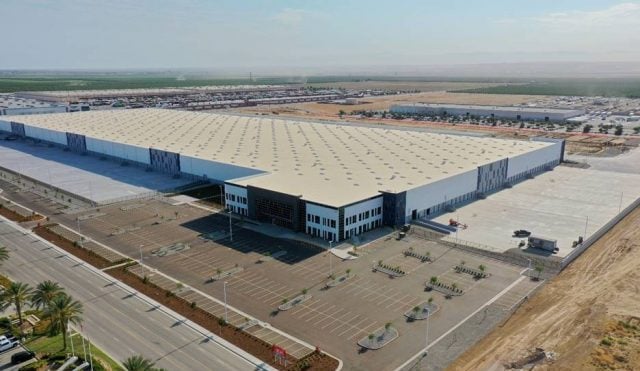SAN DIEGO—San Diego is still a secondary or even tertiary market for AMLaw 200 firms, and as such is physical unable to squeeze as much efficiency out of the highly competitive nature of this market, JLL's EVP Misty Moore tells GlobeSt.com. The firm recently released its law-firms perspectives report for the region, which revealed that San Diego law firms are still very conservative with their real estate decisions since the last recession.
According to the report, demand for San Diego law-firm space over the past few years has been stable at best, with many firms shedding excess and inefficient space. The focus is on reduction in square footage, efficiency in layout and better utilization of space. Yet San Diego is not as progressive as some other primary US markets in decreasing footprints—the average square footage per attorney here is still among the highest in the nation; depending on the firm, this is due to either vacancy (room for growth) or renewals in older space that has not been retrofit to new standard.
The report also showed that cost per attorney is high in the past year due to peak market pricing in the Downtown, UTC and Carmel Valley submarkets. Opportunities for law firms are arising in UTC and Carmel Valley based on existing law firms giving back space, plus the onslaught of new spec-office construction will further weaken the market. Downtown is still strong, and law firms don't have a lot of opportunities to take down space, whether new or second generation; Downtown will be behind UTC and Carmel Valley by a year or so in the next down cycle.
We spoke exclusively with Moore about how law firms are utilizing space more efficiently and why San Diego is lagging behind other primary US markets in decreasing footprints.
GlobeSt.com: How are law firms utilizing space more efficiently?
Moore: Over the past decade, we have seen a tremendous amount of repurposing of traditional law-firm space. Old-school libraries have been almost completely eliminated due to availability of online resources; large file rooms are shrinking to a fraction of their previous size as records are being kept electronically or stored off site; office sizes are becoming smaller and more uniform; and attorney/secretary ratios are more efficient, so less staff space is required.
GlobeSt.com: Why does San Diego lag behind other primary US markets in decreasing footprints?
Moore: The push toward new hyper-efficient office-space metrics is predominantly driven by big AMLaw 200 firms with multiple offices and nationwide edicts to reduce expenses. But San Diego is still a secondary or even tertiary market for these law firms from a global perspective. AMLaw 200 firms here tend to have lesser footprints due to the smaller and highly-competitive nature of this market. As such, they are physically unable to squeeze as much efficiency out of a 20,000-square-foot space versus a 50,000-square-foot space, since the amenities and common areas are spread among fewer revenue-producing attorneys. Additionally, the majority of law firms in San Diego, and especially Downtown, are smaller local and regional firms with the same efficiency challenges. There is also a lack of institutional pressure from “corporate” to reduce the footprint in the local firms. Last, we have experienced peak rents and high construction costs over the last couple years, which have led firms to renew in older, inefficient space rather than incur the capital expense to relocate and possibly gain greater efficiencies.
GlobeSt.com: Are any new submarkets emerging for law-firm tenants in San Diego?
Moore: Not yet. There are one or two outlier firms in other suburban markets like Mission Valley, Scripps Ranch and Sorrento Mesa, but Downtown, UTC and Carmel Valley are still the preferred submarkets for law firms.
GlobeSt.com: What else should our readers take away from this report?
Moore: Law firm leverage is slowly shifting as we approach another downturn in UTC and Carmel Valley, driven by the onslaught of new speculative-office construction and tepid law-firm growth. More second-generation law-firm space will be coming to the market in the next couple years as firms continue to shed excess space. Downtown will lag a year or two behind this trend since less spec construction is underway and demand is currently strong from a wider range of tenants.
SAN DIEGO—San Diego is still a secondary or even tertiary market for AMLaw 200 firms, and as such is physical unable to squeeze as much efficiency out of the highly competitive nature of this market, JLL's EVP Misty Moore tells GlobeSt.com. The firm recently released its law-firms perspectives report for the region, which revealed that San Diego law firms are still very conservative with their real estate decisions since the last recession.
According to the report, demand for San Diego law-firm space over the past few years has been stable at best, with many firms shedding excess and inefficient space. The focus is on reduction in square footage, efficiency in layout and better utilization of space. Yet San Diego is not as progressive as some other primary US markets in decreasing footprints—the average square footage per attorney here is still among the highest in the nation; depending on the firm, this is due to either vacancy (room for growth) or renewals in older space that has not been retrofit to new standard.
The report also showed that cost per attorney is high in the past year due to peak market pricing in the Downtown, UTC and Carmel Valley submarkets. Opportunities for law firms are arising in UTC and Carmel Valley based on existing law firms giving back space, plus the onslaught of new spec-office construction will further weaken the market. Downtown is still strong, and law firms don't have a lot of opportunities to take down space, whether new or second generation; Downtown will be behind UTC and Carmel Valley by a year or so in the next down cycle.
We spoke exclusively with Moore about how law firms are utilizing space more efficiently and why San Diego is lagging behind other primary US markets in decreasing footprints.
GlobeSt.com: How are law firms utilizing space more efficiently?
Moore: Over the past decade, we have seen a tremendous amount of repurposing of traditional law-firm space. Old-school libraries have been almost completely eliminated due to availability of online resources; large file rooms are shrinking to a fraction of their previous size as records are being kept electronically or stored off site; office sizes are becoming smaller and more uniform; and attorney/secretary ratios are more efficient, so less staff space is required.
GlobeSt.com: Why does San Diego lag behind other primary US markets in decreasing footprints?
Moore: The push toward new hyper-efficient office-space metrics is predominantly driven by big AMLaw 200 firms with multiple offices and nationwide edicts to reduce expenses. But San Diego is still a secondary or even tertiary market for these law firms from a global perspective. AMLaw 200 firms here tend to have lesser footprints due to the smaller and highly-competitive nature of this market. As such, they are physically unable to squeeze as much efficiency out of a 20,000-square-foot space versus a 50,000-square-foot space, since the amenities and common areas are spread among fewer revenue-producing attorneys. Additionally, the majority of law firms in San Diego, and especially Downtown, are smaller local and regional firms with the same efficiency challenges. There is also a lack of institutional pressure from “corporate” to reduce the footprint in the local firms. Last, we have experienced peak rents and high construction costs over the last couple years, which have led firms to renew in older, inefficient space rather than incur the capital expense to relocate and possibly gain greater efficiencies.
GlobeSt.com: Are any new submarkets emerging for law-firm tenants in San Diego?
Moore: Not yet. There are one or two outlier firms in other suburban markets like Mission Valley, Scripps Ranch and Sorrento Mesa, but Downtown, UTC and Carmel Valley are still the preferred submarkets for law firms.
GlobeSt.com: What else should our readers take away from this report?
Moore: Law firm leverage is slowly shifting as we approach another downturn in UTC and Carmel Valley, driven by the onslaught of new speculative-office construction and tepid law-firm growth. More second-generation law-firm space will be coming to the market in the next couple years as firms continue to shed excess space. Downtown will lag a year or two behind this trend since less spec construction is underway and demand is currently strong from a wider range of tenants.
Want to continue reading?
Become a Free ALM Digital Reader.
Once you are an ALM Digital Member, you’ll receive:
- Breaking commercial real estate news and analysis, on-site and via our newsletters and custom alerts
- Educational webcasts, white papers, and ebooks from industry thought leaders
- Critical coverage of the property casualty insurance and financial advisory markets on our other ALM sites, PropertyCasualty360 and ThinkAdvisor
Already have an account? Sign In Now
*May exclude premium content© 2024 ALM Global, LLC, All Rights Reserved. Request academic re-use from www.copyright.com. All other uses, submit a request to [email protected]. For more information visit Asset & Logo Licensing.









